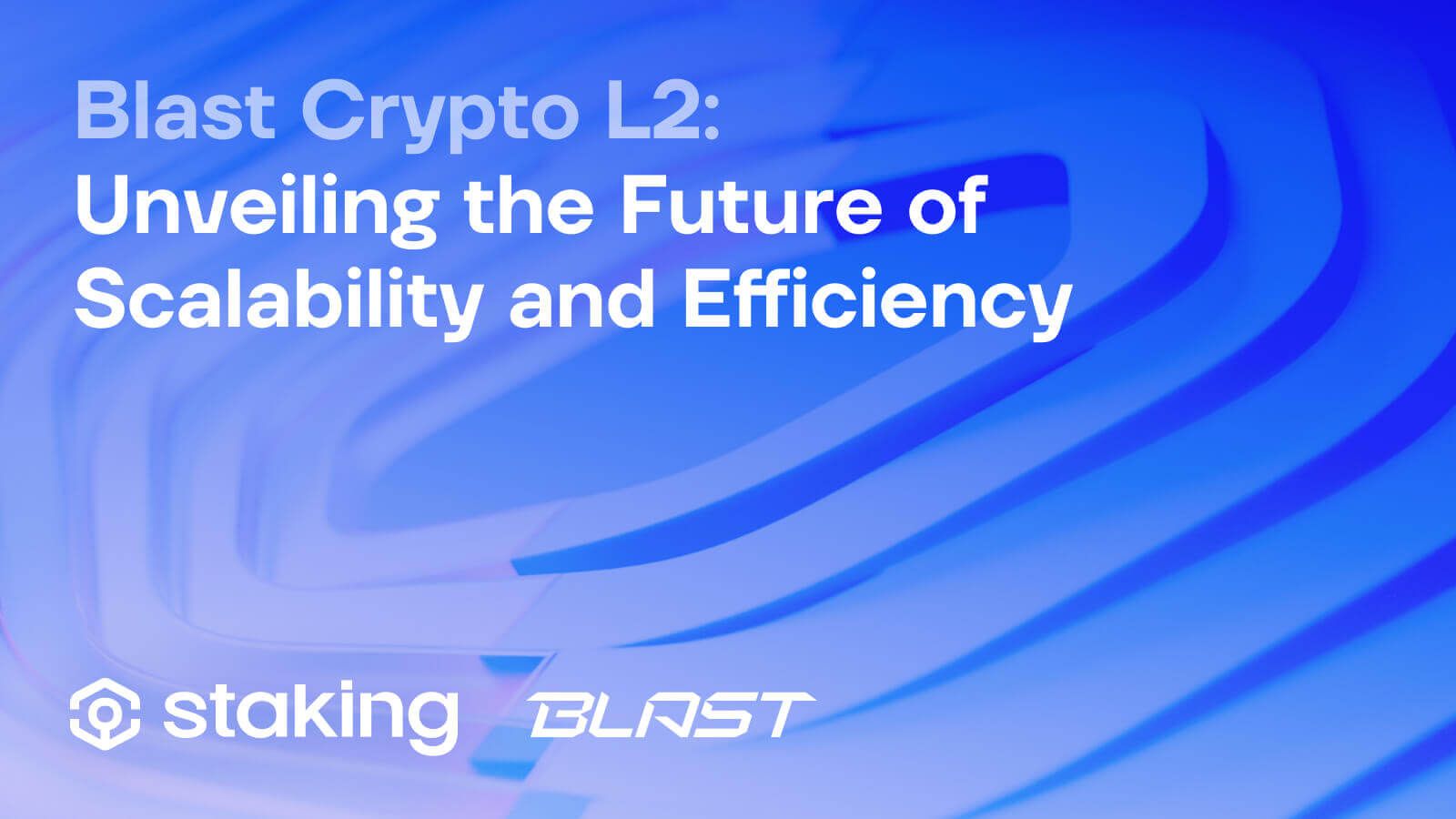Blast Crypto L2: Unveiling the Future of Scalability and Efficiency

April 4, 2024
4 min read

The introduction of Layer 2 solutions like Blast Crypto L2 has been a game-changer for scalability and transaction efficiency. As a crypto specialist catering to staking enthusiasts, we dive deep into the mechanics, benefits, and potential of Blast Crypto, providing a comprehensive guide to understanding and leveraging this innovative platform.
Start building with Ankr’s Blast RPC
What is Blast Crypto?
Blast Crypto represents a pioneering stride in blockchain technology, aiming to address the perennial issues of scalability and transaction bottlenecks faced by Layer 1 (L1) blockchains. By introducing a Layer 2 (L2) solution, Blast Crypto enhances transaction speed and efficiency, making it a promising option for developers and users alike.
- Blast Crypto is an advanced Layer 2 (L2) scaling solution designed to overcome the scalability limitations of Layer 1 (L1) blockchains like Ethereum.
What is a Crypto L2?
A Crypto L2, or Layer 2, is a secondary framework or protocol built atop a main blockchain (Layer 1). Its primary aim is to increase the blockchain's transaction capacity and speed by handling transactions off the main chain. This is crucial for decongesting the network and lowering transaction fees, thereby facilitating a smoother user experience.
How Does Blast Crypto L2 Support the L1?
Blast Crypto L2 supports the underlying L1 blockchain by taking a bulk of transaction processing off-chain. This not only speeds up transactions but also significantly reduces fees. The integration of the Blast L2 RPC (Remote Procedure Call) protocol ensures seamless communication between the L1 and L2, maintaining the network's security and integrity while enhancing its scalability.
- Blast Crypto L2 seamlessly integrates with L1 blockchains like Ethereum to alleviate congestion and network inefficiencies.
How Does Blast Work Under the Hood?
The engine behind Blast Crypto L2 is a sophisticated combination of state channels, sidechains, and rollups. These technologies work together to move transactions off the main chain, process them on the L2, and then batch them back to the L1. This process, often referred to as "blasting," ensures a faster and more cost-effective transaction experience.
Blast Bridge Crypto: Building Connections Across Networks
The Blast Bridge Crypto plays a pivotal role in interconnecting various blockchain networks. By enabling the seamless transfer of assets between different chains, the Blast Bridge facilitates a more interconnected and efficient ecosystem, where users can easily access and transact across networks.
How Blast Crypto L2 Boosts the Layer 2 Experience
By leveraging advanced cryptographic techniques and smart contract functionalities, Blast Crypto L2 enhances the overall L2 experience. It offers a robust platform for developers to build decentralized applications (dApps) without worrying about the limitations of the underlying blockchain. The platform's scalability and reduced gas fees make it an attractive option for projects looking to offer a seamless user experience.
How to Connect to Blast Mainnet
Connecting to the Blast Mainnet involves setting up your wallet to interact with the Blast L2 RPC. This process typically includes configuring your wallet's network settings to connect to the Blast RPC URL, enabling transactions and interactions on the Blast network. The simplicity and ease of connecting to the Blast Mainnet encourage broader adoption among users and developers.
Why You Should Consider Building Using Blast Crypto L2
For developers and projects contemplating the next blockchain to build on, Blast Crypto L2 offers compelling advantages. Its scalability, reduced transaction fees, and high throughput make it an ideal platform for developing dApps that require high performance and a good user experience. Moreover, its compatibility with existing Ethereum tooling lowers the barrier to entry for developers.
What Are the Expectations for Blast?
The expectations for Blast Crypto are sky-high, with many envisioning it as a cornerstone for the next wave of blockchain development. Its ability to provide a scalable, efficient, and user-friendly platform positions it as a key player in the future of decentralized applications and blockchain technology as a whole.
In conclusion, Blast Crypto L2 emerges as a potent solution to the scalability and efficiency challenges plaguing traditional blockchains. By harnessing the power of L2 solutions, Blast Crypto not only enhances the blockchain landscape but also opens up new possibilities for developers, stakeholders, and users. As the platform continues to evolve, its impact on the crypto ecosystem is expected to be significant, making it a worthwhile consideration for anyone looking to build or invest in the future of blockchain technology.
Develop dApps on Blast with Ankr’s RPC




